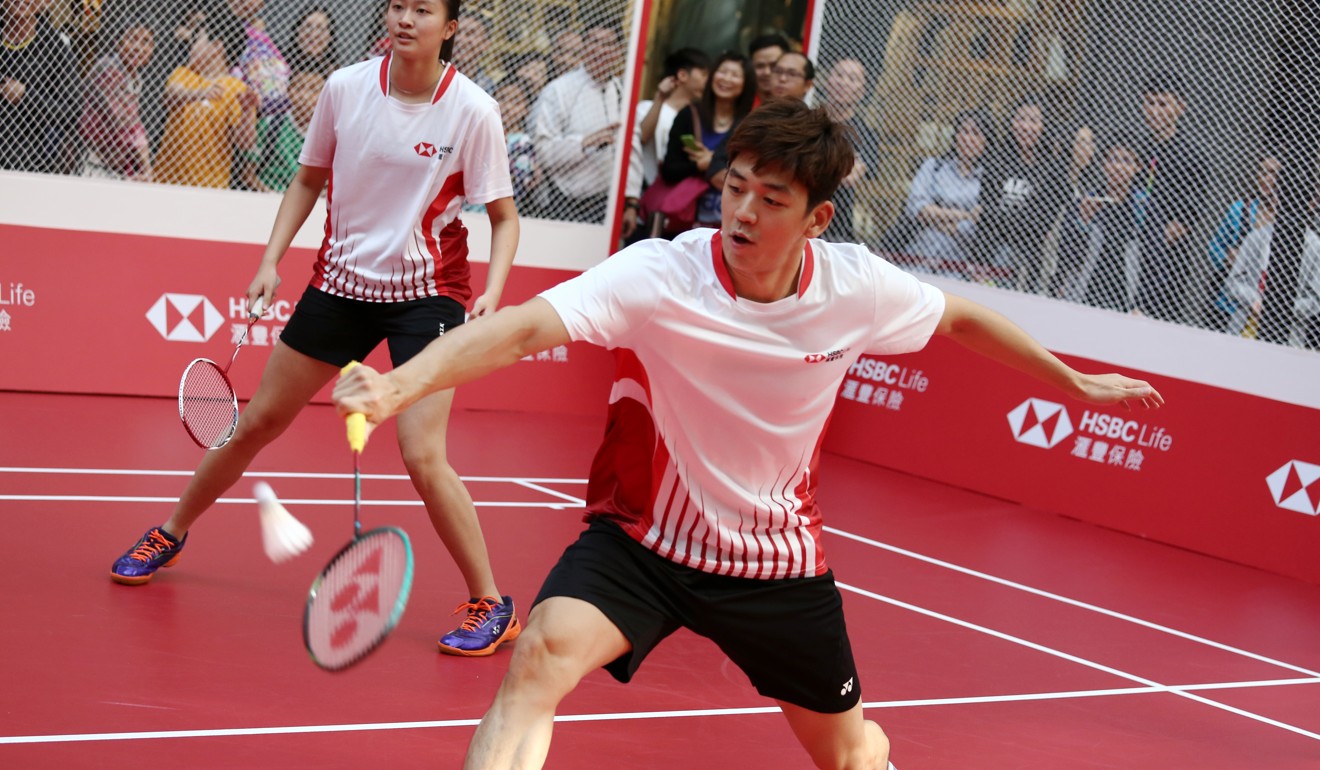
How Olympic badminton star got his mojo back and hit the gym in quest for Games swan song
- South Korean Lee Yong-dae, a gold medallist at 2008 Games and a former world No 1, retired with burnout in 2016 – but now he’s back
- The 30-year-old tells us about being a gym rat and using visualisation to defeat opponents as he seeks more Olympic glory
After the 2016 Rio Olympics, South Korean badminton player Lee Yong-dae announced his official retirement. He had played at the highest level of the sport, reached the world No. 1 ranking and won an Olympic gold medal in mixed doubles with Lee Hyo-jung at the 2008 Beijing games.
Asked if his retirement had anything to do with the death of his doubles partner Jung Jae-sung, 35, from a heart attack earlier this year, Lee said his curtain call was due to burnout. The pair won bronze in the men’s doubles at the 2012 London Olympics.
Cancer-stricken Lee Chong Wei still aiming for Tokyo Olympics
“It was not a sudden decision. Actually I was preparing to retire after the Rio Olympics because I’ve been playing for the Korean national team for a really long time and I was tired both physically and mentally,” he says. “I wanted to take a rest.”
Today, though, with his batteries fully recharged the 30-year-old is back playing again with doubles partner Kim Gi-jung, also from South Korea.
Lee was speaking at the Olympian City 2 shopping centre in Hong Kong’s West Kowloon neighbourhood, where he attended HSBC Life’s City Badminton event this month. He returns to the sport with a renewed sense of enthusiasm, although the player admits it has been a steep climb to get back to the elite level again.

“Honestly, it’s tough to get back to my 2016 [form] but I’m working on my condition, which is back at around 70 per cent. Since I’m aiming to compete in the 2020 Tokyo Olympics I’m trying to do my best to return to top form,” he says.
Lee says he knew he was still young enough to make a comeback as a professional.
“If you play badminton you have to be strong mentally and physically,” he adds. In preparation, Lee has become a gym rat, regularly attacking the weights (apparently this helps his “smash power” shots) as well as running to build stamina. Aside from badminton practice, he works out four or five days a week.
How prosthetic arm made amputee’s violin dreams come true
“I plan to put my time 50/50 on both badminton and gym [sessions],” he says.
His mental techniques include harnessing visualisation, using his imagination to guess his opponent’s shots on court. “It helps me to predict how he plays,” he says. Regularly engaging in this “imaging training” is a major part of his mental preparation for matches.
The kid from Hwasun in South Jeolla province dreamed of playing baseball, but his mother nudged the then chubby eight-year-old into trying badminton to shed some weight. His talent for the sport eventually led to him joining the Hwasun Middle School team.
“I found out I was good at it and my coach at the time encouraged me to keep playing badminton,” Lee recalls.

He was called up to the South Korean national badminton team in 2003 at the age of 15. According to his friend Chul Jung, who sometimes travels with him to events, training for the national team is akin to joining the army; athletes undergo gruelling training regimens that require them to get up at 6am.
It meant Lee had very little free time to engage in activities outside the sport, and after 15 years of this arduous routine he was left exhausted and seeking a break.
Despite the fact his badminton career is back on track, he still does not follow a particular diet.
“I don’t put a lot of stress on diet, but I know if I lose weight I won’t play well, so I try to eat as much protein as possible,” Lee says. He regularly tucks into beef, pork and chicken dishes, particularly Korean barbecue beef.

His friend Jung says Lee has a liberal appetite, having witnessed his consumption of everything from noodles to meat dishes to soft drinks. He says that since Lee began playing the sport professionally again, he has become more relaxed and happy.
“I know a lot of [badminton] players and for them it’s not always a joy to play – it is a pain or it becomes a job. But for this guy, he now really enjoys playing, which explains why he can play for a long time and not get bored,” says Jung.
Lee is currently recovering from an elbow injury he suffered last year. It’s a common injury among badminton players. He travels with his own mini-ultrasound machine to check on his elbow, as well as a portable massager that he uses once or twice daily for pain relief after games and workouts.

“I really want to keep improving my ranking so I can go and try for gold at the Tokyo Olympics in 2020,” he says. “I want to be remembered as a player who always did his best and maintained a [top] level for a long time.”
HSBC Life, in partnership with the Badminton World Federation, organised the badminton-themed activities at the shopping centre in West Kowloon as part of the insurer’s initiative to promote healthy lifestyles.
“We hope this can encourage Hongkongers to lead an active life and start taking control of their well-being for both the body and the mind so that they can live longer, fitter and happier [lives],” says Edward Moncreiffe, HSBC Life’s CEO in Hong Kong.

Several legendary players in the badminton world flew in for the event, including Denmark’s Viktor Axelsen, a 2017 BWF world champion who is No. 3 in the world.

